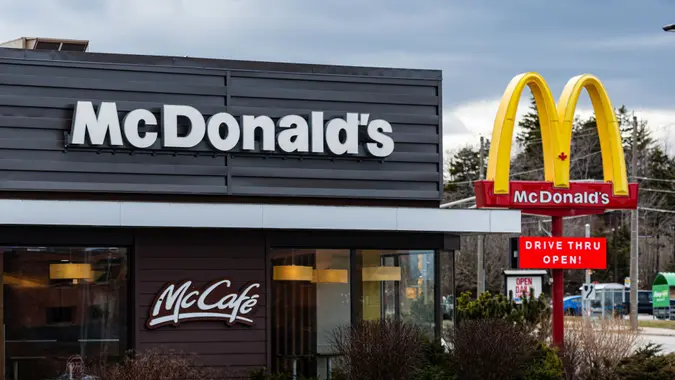Their Loss, Your Gain? How Inflation Could Force Walmart to Discount More Items

Commitment to Our Readers
GOBankingRates' editorial team is committed to bringing you unbiased reviews and information. We use data-driven methodologies to evaluate financial products and services - our reviews and ratings are not influenced by advertisers. You can read more about our editorial guidelines and our products and services review methodology.

20 Years
Helping You Live Richer

Reviewed
by Experts

Trusted by
Millions of Readers
In a year of historically high inflation that has seen prices soar for everything from eggs and butter to airfare and sport coats, Walmart is going in the opposite direction by cutting prices on certain items. On Monday, the world’s largest retailer said it would lower prices on some of its products to reduce an abundance of inventory.
Walmart made the announcement July 25 after it warned that profits would head lower this year, partly due to sluggish sales of non-essential items. The retailer is expected to mark down prices of clothing, electronics, toys and other general merchandise items, Entrepreneur reported.
“The increasing levels of food and fuel inflation are affecting how customers spend, and while we’ve made good progress clearing hardline categories, apparel in Walmart U.S. is requiring more markdown dollars,” Walmart CEO Doug McMillon said in a statement. “We’re now anticipating more pressure on general merchandise in the back half. However, we’re encouraged by the start we’re seeing on school supplies in Walmart U.S.”
Walmart said it expects adjusted earnings per share for the second quarter and full year to decline around 8% to 9% and 11% to 13%, respectively. Consolidated net sales for Q2 and the full year are expected to grow about 7.5% and 4.5%, respectively. The company is scheduled to report second-quarter results on Aug. 16.
Walmart’s stock price fell 10% after hours on July 25, Seeking Alpha reported, leading to a broader selloff in the retail sector. The company’s foot traffic remains solid as consumers still flock to its stores to buy food, which is reflected in the gains it has reported in grocery items. Even so, food inflation “pulled more dollars away from GM [general merchandise] than we expected,” McMillon said.
One result is that Walmart has seen a higher-than-expected increase in inventory, leading to the need to mark down certain items to help clear the shelves.
Walmart and other retailers have also been impacted by an end to COVID-19 stimulus checks just as inflation has been on the rise. In June, rival Target said it is using markdowns and other steps to reduce its own excess inventory, MarketWatch reported. Target CEO Brian Cornell said at the time that his company expected a “post-stimulus slowdown” but was also caught off-guard by the “magnitude of that shift.”
More From GOBankingRates
 Written by
Written by  Edited by
Edited by 

























